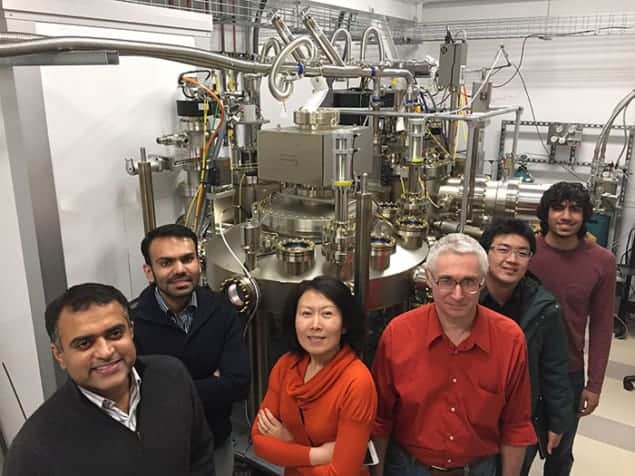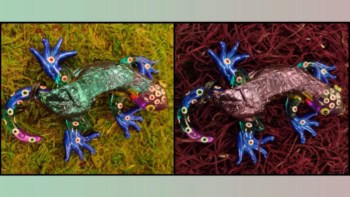
Light-emitting diodes (LEDs) that are efficient at producing deep-ultraviolet light have been created by Grace Xing, Debdeep Jena and colleagues at Cornell University in the US. The devices could be used to kill a wide range of harmful micro-organisms.
Deep-ultraviolet light has wavelengths between 200–280 nm and is particularly effective at penetrating tiny living organisms and killing them by disrupting their DNA. As a result, deep-ultraviolet light has been used for more than 100 years for controlling harmful viruses, bacteria, moulds and even dust mites. Today, most deep-ultraviolet sources are mercury vapour lamps. Although these devices are very good at what they do, mercury is a highly toxic substance and researchers are therefore trying to develop alternative sources of deep-ultraviolet light.
Low efficiencies
LEDs could offer a way forward, but creating sources that are bright enough to be of practical use has been a challenge. Boosting the efficiency of such devices involves making improvements in three main areas. The proportion of the electrical current passing through the device that makes it to the light-producing “active region” (the injection efficiency) could be increased. Once the electrons get to the right place, the proportion that actually creates light – the internal quantum efficiency (IQE) – could be improved. Finally, the amount of light that emerges from the device (the light extraction efficiency) could be boosted.
Conventional deep-ultraviolet LEDs are based on the compound semiconductor aluminium gallium nitride, but now the Cornell team has shown that devices made from atomically thin layers of gallium nitride and aluminium nitride have higher IQE and light-extraction efficiency. The team was also able to boost the injection efficiency of their LEDs by using a polarization-induced scheme for doping both the n and p regions of the device.
Record breaking
They made three different LEDs that create light with wavelengths of 232 nm, 246 nm and 270 nm. The 232 nm device is the shortest-wavelength gallium nitride LED ever made, beating the previous record of 239 nm set by a research group in Japan.
The next task for the team is to integrate their LEDs in a package that could form the basis of commercial deep-ultraviolet sources. “We do want to package it within the next few months and test it as if it was a product, and try to benchmark it against a product with one of the available technologies,” says Jena.
The devices are described in Applied Physics Letters.



